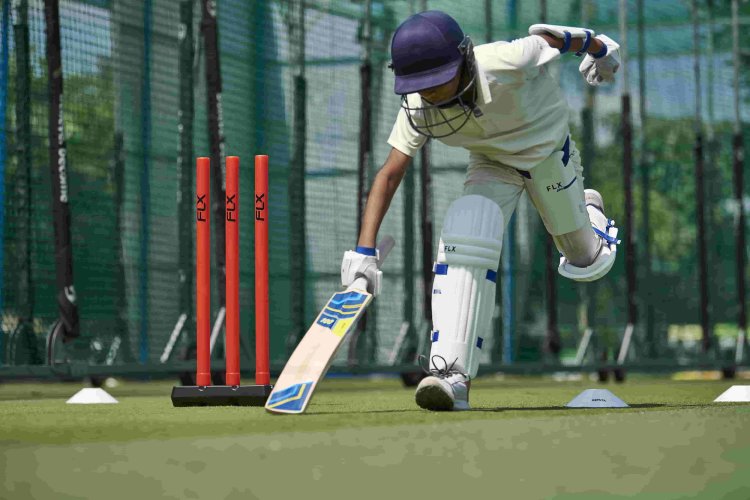Strength Training for Cricket Players
Strength training is crucial for cricket players as it enhances overall physical performance, reduces the risk of injuries, and improves power and endurance.

Strength Training for Cricket Players
Strength training is crucial for cricket players as it enhances overall physical performance, reduces the risk of injuries, and improves power and endurance. Here's a comprehensive guide to strength training for cricket players:
Keeping fit off the pitch
The endurance and stamina of a cricket player on the field are determined by their activities off the field. As a sport based on quick, powerful movements, it is crucial to include strength training in your fitness regimen to enhance your performance.
Strength training for batsmen
The physical demands placed on a cricketer's body necessitate proper strengthening and conditioning. As a batsman, you use your entire body to execute a fluent motion. A batsman's skillset is comprised of mobility, strength, and aerobic fitness. You should also consider how your equipment, such as your padding and bat, affects your batting prowess. Therefore, you must emphasize each of these in your gym training program.
You rely on the muscles in your back, shoulders, and biceps for hitting. As you strike the bat, you also engage your core muscles to assist with body rotation. Your strength training should therefore emphasize compound movements such as:
- Bicep curls
- Hammer rows
- Close-grip pull-ups
- Overhead presses such as military presses
- Hitting the triceps with dips and tricep extensions will help to develop that explosiveness needed to bring the bat forward.
- Round your routine off with core exercises such as planks and variations of crunches.
Strength training for bowlers
Bowling is another full-body activity, but it emphasizes the dominant limb. Bowlers typically observe that their bowling arm has increased strength and muscle tone as a result of the repetitive motion. As the bowler accelerates and releases the ball, the abdominals, obliques, and back muscles are utilized primarily to twist the body.
Focus on rotator cuff strength, rotator strength, and explosive movement. The rotator cuff comprises the shoulder ligaments that support the arm. In fast bowling, the shoulder rotates inwards and outwards while the hip and abdominal muscles stabilize and power the movement.
Specific exercises can include:
- Dumbbell flys.
- Cable internal & external rotations. Aim for a 10-15 rep range focusing on proper form.
- For abs, try medicine ball slams to help strengthen the stabilising muscles.

Strength training for fielding
On the field, fielders frequently execute sudden stops and bursts of speed. Consequently, focusing on lower body strength for speed and agility and chest and shoulder exercises for hurling the ball could improve your performance on the field.
To heat up Perform a box leap before beginning your strength training session. Box jumps are beneficial because they increase your explosiveness. Perform three to five repetitions at a challenging height to begin.
The combination of squats, walking lunges, and single-leg deadlifts with a leap stimulates the muscles necessary for speed, strength, and performance.
Consider incorporating shoulder presses and lat-pulls into your training regimen in order to develop shoulder and pectoral strength.
The frog crouch is another excellent exercise for field cricketers, as this movement can aid in fielding ground balls. Two to four sessions per week will strengthen and condition your entire body.
As fielders spend a great deal of time on their feet, alternating between standing still and accelerating, you should complement your strength training with aerobic exercises such as running, rowing, or cycling.
Also read: What Causes Air Pollution?
3 Essential stretches for cricketers
Batting, bowling, and fielding all pose an injury risk. Repetitive movement and extended periods of activity place a significant amount of strain on the body. Stretching may appear to be a minor aspect of your strength training program, but it is crucial. Try the following stretches following your strength training program to prevent injury and maintain performance on the field:
In a kneeling position, extend your right leg in front of you and press your left hip forward until you feel a stretch in your left hip. Repeat on the reverse side. Standing sideways against a wall with one foot in front of the other, stretch your pectoral muscles by bringing your back arm against the wall behind you and gingerly pressing it against the wall while rotating slightly to the left. Standing with the feet shoulder-width apart, raise the arms to the ceiling while clasping the hands. Bend slowly to one side until you feel a stretch in the side body. Continue on the reverse side.
Regardless of your skill level as a cricket player, strength training will improve your game and overall performance by enhancing your agility and fitness. Cricket is a technique-driven sport in which players should tailor their stamina and conditioning to their specific position. With a stretching program, you can gain strength to prevent injury, improve your explosive speed, and enhance your optimal performance.












